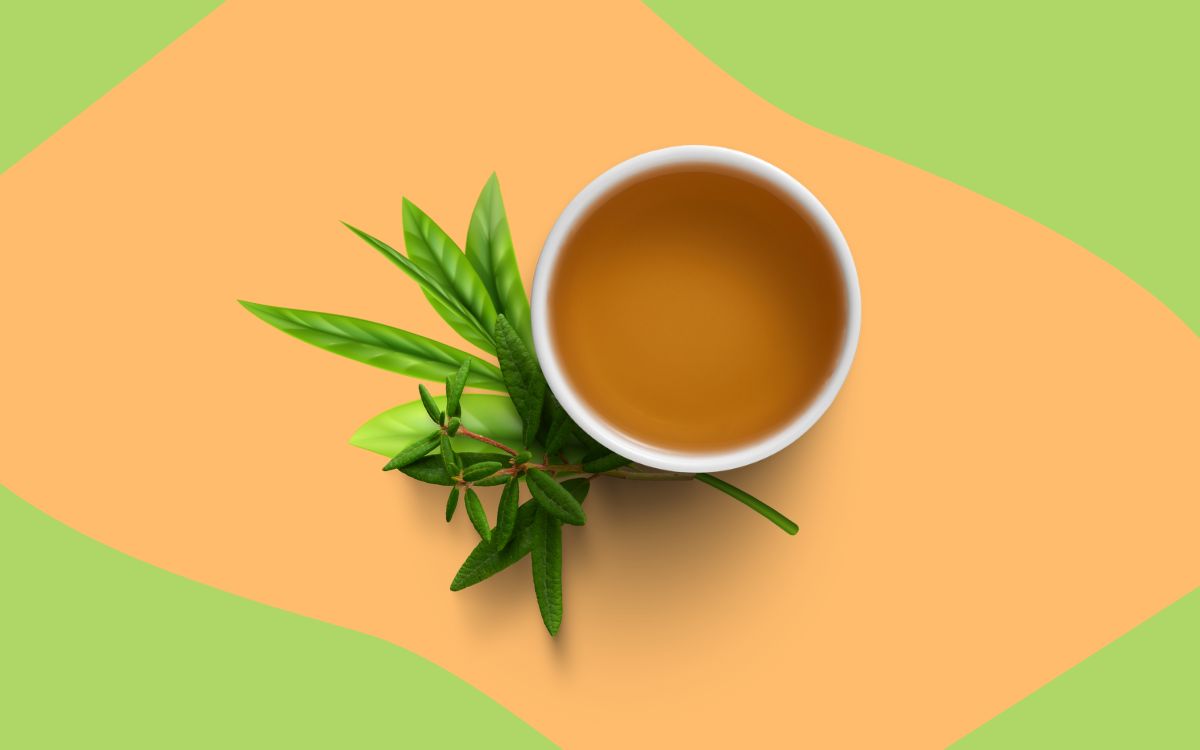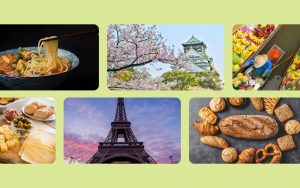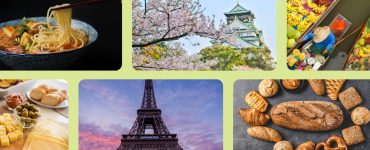Across continents and cultures, tea has captured the hearts and taste buds of millions, becoming a beloved beverage that transcends borders. Its history is steeped in ancient legends and traditions, and its flavors and aromas have the power to transport us to far-off lands.

In this blog post, we embark on a journey to discover tea cultures worldwide, delving into the rituals, aesthetics, and unique flavors that make each tea culture special.
Tea Origins: Tracing the Roots
Tea, with its rich history and captivating allure, has its origins deeply rooted in ancient legends and traditions. This section takes us on a journey through time, exploring the fascinating beginnings of tea and how it found its way into the hearts and teapots of people around the world.
Ancient Legends and Myths
Tea’s origins are shrouded in ancient legends and myths that add an air of mystique to its beginnings. One such legend hails from China, where it is said that Emperor Shen Nong discovered tea accidentally when tea leaves fell into his boiling water. This serendipitous event led to the realization of the delicious and invigorating properties of tea.
The Discovery of Tea in China
China holds a significant place in the history of tea. The Chinese have been cultivating and drinking tea for thousands of years, making it an integral part of their culture. It was in China that tea was first recognized for its medicinal properties and began to be consumed for pleasure. Tea was not only enjoyed as a beverage but was also used in religious rituals and as a symbol of hospitality.
Tea’s Journey to Japan and Other Asian Countries
The allure of tea spread beyond China’s borders, reaching neighboring countries such as Japan, Korea, and Vietnam. Each country embraced tea in its own unique way, incorporating its distinct cultural elements into the tea-drinking experience. In Japan, the Zen philosophy influenced the development of the renowned Japanese tea ceremony, elevating tea preparation to an art form.
Tea’s Introduction to the West
Tea made its way to the Western world through various trade routes and exploration voyages. The Portuguese and the Dutch were among the first Europeans to encounter tea in their voyages to the East. However, it was the British who played a pivotal role in popularizing tea in the West. Tea became a symbol of British culture and a centerpiece of social gatherings, leading to the establishment of tea houses and the tradition of afternoon tea.
Asian Tea Traditions: Rituals and Aesthetics
Chinese Tea Culture: Harmony and Tranquility
In Chinese tea culture, tea is more than just a beverage; it is an art form that embodies harmony, tranquility, and mindfulness. Gongfu Cha, the traditional Chinese tea preparation method, is a meticulous and elegant practice that involves precise measurements, controlled pouring, and the use of specialized teaware.
The focus is not only on the taste of the tea but also on the sensory experience, with attention paid to the aroma, color, and texture of the tea. Tea houses are integral to Chinese tea culture, providing a serene space for social gatherings, contemplation, and the appreciation of fine teas.
Japanese Tea Ceremony: Zen and Serenity
The Japanese tea ceremony, known as Chanoyu or Sado, is a highly ritualized and meditative practice that embodies Zen philosophy. The ceremony is rooted in principles of simplicity, respect, and harmony. Matcha, a finely powdered green tea, takes center stage in the Japanese tea ceremony.
The preparation and serving of matcha involve precise movements, graceful gestures, and the use of beautiful ceremonial utensils. Tea gardens, with their meticulously manicured landscapes and tranquil settings, provide the backdrop for the tea ceremony, emphasizing the connection to nature and the seasons.
Indian Chai Culture: Spice and Warmth
In India, tea takes on a vibrant and aromatic form known as chai. Chai holds a special place in Indian culture, symbolizing warmth, hospitality, and togetherness. The preparation of chai involves simmering black tea leaves with a blend of spices such as cardamom, cinnamon, ginger, and cloves.
The resulting brew is a fragrant and flavorful concoction that is often sweetened with milk and sugar. Chai is not only enjoyed in households but also at roadside chai stalls, where it serves as a social hub, bringing people together for conversations and camaraderie.
Global Tea Appreciation: Unique Flavors and Traditions
British Tea Culture: Elegance and Afternoon Tea
British tea culture is synonymous with elegance, tradition, and the renowned practice of afternoon tea. Tea holds a cherished place in British society, with tea-drinking rituals steeped in history and etiquette. Afternoon tea, a quintessentially British tradition, involves a leisurely affair of tea, delicate sandwiches, scones with clotted cream and jam, and a selection of pastries.
The ceremony of pouring tea from a teapot and enjoying it from fine china cups adds a touch of refinement to the experience. The British tea landscape boasts a variety of tea blends, with black teas like Earl Grey and English Breakfast reigning supreme.
Moroccan Mint Tea: Hospitality and Refreshment
In Morocco, tea is not just a beverage but a symbol of hospitality and warmth. Moroccan mint tea, known as “Atay,” is an integral part of Moroccan culture and social gatherings. This refreshing tea combines green tea leaves, spearmint leaves, and sugar, creating a vibrant and invigorating brew.
The art of pouring tea in a graceful and continuous stream from a decorative teapot is a tradition that reflects the Moroccan value of hospitality. Moroccan mint tea is often served in small, intricately designed glasses, adding to the aesthetic appeal of the tea-drinking experience.
Russian Tea: A Hearty Affair
Russian tea culture is deeply rooted in tradition and embraces a hearty and comforting approach to tea. The centerpiece of Russian tea culture is the samovar, a traditional metal urn used for heating water. The samovar is not only a practical tool but also a symbol of hospitality and gathering.
Traditional Russian tea accompaniments include small, sweet pastries called “Blini,” as well as jams, preserves, and honey. Russian tea rituals often take on a special significance during the winter months, with the use of a tea cozy to keep the tea warm and an emphasis on creating a cozy and inviting atmosphere.
Health Benefits and Tea Varieties
Exploring Tea Types: Green, Black, White, and More
Tea comes in a fascinating array of types, each with its own distinct characteristics and flavors. Green tea, known for its delicate and grassy taste, undergoes minimal oxidation during processing, preserving its natural antioxidants. Black tea, on the other hand, is fully oxidized, resulting in a robust and bold flavor profile.
White tea, the least processed of all teas, offers a subtle and delicate flavor, with a high concentration of antioxidants. Oolong tea, with its partially oxidized leaves, strikes a balance between the fresh vibrancy of green tea and the richness of black tea. Exploring the different tea types opens up a world of flavors and allows for a diverse tea-drinking experience.
The Health Benefits of Tea: Wellness in Every Sip
Tea is not only a delightful beverage but also offers a range of potential health benefits. It is rich in antioxidants, such as catechins and flavonoids, which can help protect the body against damage from harmful free radicals. The specific health benefits of tea vary depending on the type of tea consumed.
Green tea, for example, is associated with potential benefits for heart health, weight management, and cognitive function. Black tea has been linked to improvements in cardiovascular health and digestion. White tea is prized for its potential anti-aging properties. Understanding the potential health benefits of tea can help guide choices based on individual wellness goals.
Uncovering Tea Culture: Travel and Experiences
Tea Tourism: Destinations for Tea Enthusiasts
For tea enthusiasts, embarking on tea tourism offers a unique opportunity to delve deeper into the world of tea and immerse oneself in tea cultures. There are various destinations around the globe that are renowned for their tea production and tea-related experiences.
From the rolling hills of Darjeeling in India to the sprawling tea plantations of Sri Lanka, visiting these regions provides a firsthand glimpse into the cultivation, processing, and tasting of tea. Tea tourism allows travelers to witness the intricate tea-making processes, engage with tea artisans, and indulge in tea tastings, all while being surrounded by breathtaking landscapes.
Tea Festivals around the World
Tea festivals are vibrant celebrations that bring together tea lovers from near and far. These events showcase the diversity of tea cultures, offering an opportunity to explore different teas, attend tea ceremonies and workshops, and interact with tea experts.
From the World Tea Expo in the United States to the World O-Cha (Tea) Festival in Japan, these festivals provide a platform for tea enthusiasts to expand their knowledge, discover new teas, and engage in the global tea community. Attending a tea festival can be a truly immersive and enriching experience for those passionate about tea.
Tea-Focused Travel Experiences and Itineraries
Tailored tea-focused travel experiences and itineraries offer a curated journey for tea enthusiasts to fully indulge in the world of tea. These experiences can include visits to tea gardens and estates, tea tastings, tea ceremonies, and interactions with tea experts.
Whether it’s exploring the tea villages of China’s Yunnan province or embarking on a tea tour through Japan’s historic tea regions, these specialized itineraries offer an in-depth exploration of tea cultures and allow travelers to gain a deeper understanding of the traditions, rituals, and flavors associated with tea.
Conclusion
As we bring our exploration of tea cultures worldwide to a close, we are left with a deep appreciation for the beauty and diversity that tea brings into our lives. From the serene tea ceremonies of Japan to the vibrant chai culture of India, and the elegance of British afternoon tea, tea has woven its way into the fabric of our global society. It is a beverage that goes beyond mere sustenance, connecting us to traditions, nature, and one another.









